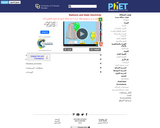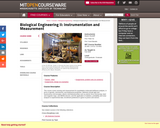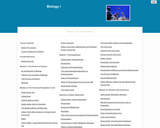
First group of Eagle Cam data.
- Subject:
- Science
- Material Type:
- Diagram/Illustration
- Provider:
- Reimagine Teaching
- Provider Set:
- HawkWatch International
- Date Added:
- 12/14/2020

First group of Eagle Cam data.

Second group of Eagle Cam data.

Third group of Eagle Cam data.

Fourth group of Eagle Cam data.

Fifth group of Eagle Cam data.

An instuctional outline of the BIO.1.5 episode 1, part 1 unit.

Students explore static electricity by rubbing a simulated balloon on a sweater. As they view the charges in the sweater, balloon, and adjacent wall, they gain an understanding of charge transfer. This item is part of a larger collection of simulations developed by the Physics Education Technology project (PhET). The simulations are animated, interactive, and game-like environments.

Why does a balloon stick to your sweater? Rub a balloon on a sweater, then let go of the balloon and it flies over and sticks to the sweater. View the charges in the sweater, balloons, and the wall.

This video segment explores the world of the beaver, including the biology of the species and, more importantly, its ability to transform an ecosystem for its own benefit.

This course covers sensing and measurement for quantitative molecular/cell/tissue analysis, in terms of genetic, biochemical, and biophysical properties. Methods include light and fluorescence microscopies; electro-mechanical probes such as atomic force microscopy, laser and magnetic traps, and MEMS devices; and the application of statistics, probability and noise analysis to experimental data.

This video segment from Evolution: "Extinction!" shows the impact of invasive species on native ecosystems.

Biology is designed to cover the scope and sequence requirements of a typical two-semester biology course for science majors. The text provides comprehensive coverage of foundational research and core biology concepts through an evolutionary lens. Biology includes rich features that engage students in scientific inquiry, highlight careers in the biological sciences, and offer everyday applications. The book also includes clicker questions to help students understand—and apply—key concepts.

An introduction to biology intended for non-science majors. Focus areas include chemical foundations, cell structure and division, genetics, and evolution.

This template course was developed from generally available open educational resources (OER) in use at multiple institutions, drawing mostly from a primary work published by OpenStax College Concepts of Biology, but also including additional open works from various sources as noted in attributions on each page of materials.

This material is labwork meant to be used in conjunction with the Candela "Biology II" course.

Short Description:
In this survey text, directed at those not majoring in biology, we dispel the assumption that a little learning is a dangerous thing. We hope that by skimming the surface of a very deep subject, biology, we may inspire you to drink more deeply and make more informed choices relating to your health, the environment, politics, and the greatest subject that all of us are entwined in, life itself. This text also includes interactive H5P activities that you can use to evaluate your understanding as you go.
Long Description:
In this survey text, directed at those not majoring in biology, we dispel the assumption that a little learning is a dangerous thing. We hope that by skimming the surface of a very deep subject, biology, we may inspire you to drink more deeply and make more informed choices relating to your health, the environment, politics, and the greatest subject that all of us are entwined in, life itself. This text also includes interactive H5P activities that you can use to evaluate your understanding as you go.
In the adapted textbook, Concepts of Biology, you will find the following units: Unit 1: Principles of Cellular Life Unit 2: Principles of Inheritance Unit 3: Principles of Evolution Unit 4: Principles of Ecology
Word Count: 189879
(Note: This resource's metadata has been created automatically by reformatting and/or combining the information that the author initially provided as part of a bulk import process.)

Short Description:
In this survey text, directed at those not majoring in biology, we dispel the assumption that a little learning is a dangerous thing. We hope that by skimming the surface of a very deep subject, biology, we may inspire you to drink more deeply and make more informed choices relating to your health, the environment, politics, and the greatest subject that all of us are entwined in, life itself. This text also includes interactive H5P activities that you can use to evaluate your understanding as you go.
Long Description:
In this survey text, directed at those not majoring in biology, we dispel the assumption that a little learning is a dangerous thing. We hope that by skimming the surface of a very deep subject, biology, we may inspire you to drink more deeply and make more informed choices relating to your health, the environment, politics, and the greatest subject that all of us are entwined in, life itself. This text also includes interactive H5P activities that you can use to evaluate your understanding as you go.
In the adapted textbook, Concepts of Biology, you will find the following units: Unit 1: Principles of Cellular Life Unit 2: Principles of Inheritance Unit 3: Principles of Evolution Unit 4: Principles of Ecology
Word Count: 189359
(Note: This resource's metadata has been created automatically by reformatting and/or combining the information that the author initially provided as part of a bulk import process.)

This ZOOM video segment shows how to create a self-contained environment and explores evaporation, condensation, and precipitation.

This interactive resource adapted from NASA describes the different temperature, precipitation, and vegetation patterns in seven biomes: coniferous forest, temperate deciduous forest, desert, grassland, rainforest, shrubland, and tundra.

There are almost as many types of bird beaks as there are types of food that birds like to eat. This collection of images shows a wide range of beaks and the types of foods handled by each.